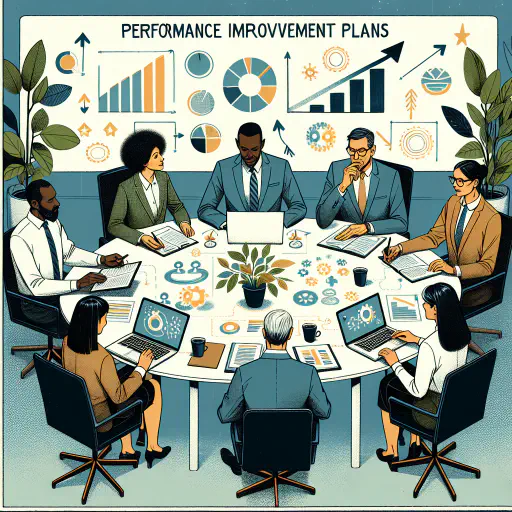
From Struggle to Success: Crafting PIPs That Drive Real Results
Are your performance improvement plans failing to drive real change in employee performance? Many organizations struggle with ineffective performance improvement strategies that don’t address underlying issues. This often results from unclear expectations, poor communication, or lack of proper follow-up.
Solving this problem is crucial for boosting productivity, retaining talent, and aligning individual performance with company goals. In this blog, you’ll learn practical strategies to create effective PIPs that drive real results, helping you improve employee performance and achieve organizational success.
1. Understanding the Importance of Effective PIPs
Performance Improvement Plans (PIPs) are crucial tools for enhancing employee productivity and aligning individual performance with organizational goals. However, many companies struggle to implement PIPs that drive real change.
Ineffective PIPs often result from:
- Unclear expectations
- Poor communication
- Lack of proper follow-up
Addressing these issues is essential for:
- Boosting overall productivity
- Retaining valuable talent
- Achieving long-term organizational success
2. Setting Clear and Measurable Objectives
The foundation of an effective PIP lies in establishing clear, specific, and measurable objectives. These goals should be:
- SMART: Specific, Measurable, Achievable, Relevant, and Time-bound
- Aligned with the employee’s role and the company’s broader objectives
- Clearly communicated and understood by both the employee and manager
By setting well-defined targets, you provide a clear roadmap for improvement and create a basis for objective evaluation.
3. Fostering Open and Honest Communication
Effective communication is key to the success of any PIP. Create an environment that encourages open dialogue and constructive feedback:
- Schedule regular check-ins to discuss progress and address concerns
- Provide specific, actionable feedback on both strengths and areas for improvement
- Encourage the employee to share their perspective and ideas for improvement
Remember, the goal is to support the employee’s growth, not to criticize or punish.
4. Providing Necessary Resources and Support
For a PIP to be successful, employees must have access to the tools and support they need to improve. This may include:
- Additional training or skill development opportunities
- Mentorship programs or pairing with high-performing colleagues
- Access to relevant resources or technology
By investing in your employees’ development, you demonstrate your commitment to their success and increase the likelihood of positive outcomes.
5. Implementing a Structured Follow-up Process
Consistent follow-up is crucial for maintaining momentum and ensuring progress. Develop a structured process that includes:
- Regular progress reviews (weekly or bi-weekly)
- Documentation of achievements and areas still needing improvement
- Adjustments to the plan as needed based on progress and changing circumstances
This ongoing engagement helps keep the employee accountable and allows for timely interventions if progress is not being made.
6. Celebrating Progress and Milestones
Recognize and celebrate progress, no matter how small. This positive reinforcement can:
- Boost morale and motivation
- Reinforce desired behaviors and outcomes
- Create a more positive atmosphere around the PIP process
Remember to acknowledge both effort and results, as consistent effort often leads to improved performance over time.
7. Ensuring Fairness and Consistency
To maintain credibility and trust in the PIP process:
- Apply PIPs consistently across the organization
- Ensure that performance standards are fair and equitable
- Provide clear guidelines on how PIPs are initiated, implemented, and concluded
This approach helps prevent perceptions of bias or unfair treatment, which can undermine the effectiveness of your performance improvement efforts.
8. Leveraging Technology for Better Tracking and Analysis
Utilize performance management software or tools to:
- Track progress more efficiently
- Provide real-time feedback and updates
- Analyze trends and patterns in performance data
This data-driven approach can help identify systemic issues and inform broader organizational improvements.
9. Preparing for All Outcomes
While the goal of a PIP is improvement, it’s important to be prepared for all possible outcomes:
- Have a clear plan for transitioning successful employees back to regular performance management
- Establish guidelines for extending the PIP if more time is needed
- Be prepared to take appropriate action if performance does not improve
Clear expectations about potential outcomes help manage employee anxiety and ensure a fair process.
10. Continuously Improving Your PIP Process
Regularly evaluate and refine your PIP process:
- Gather feedback from managers and employees who have been through the process
- Analyze success rates and identify common factors in successful PIPs
- Stay informed about best practices in performance management
By continuously improving your approach, you can create a more effective and supportive performance improvement process that drives real results for your organization.
Now that you’ve learned these powerful strategies for crafting effective PIPs, it’s time to put them into action. Challenge yourself to implement at least three of these techniques in your next performance improvement plan. Start small by focusing on clear, measurable objectives and open communication.
Don’t wait for the perfect moment – begin applying these principles in your very next employee meeting or performance review. Remember, even small changes can lead to significant improvements over time.
By taking this step, you’re not just improving individual performance; you’re contributing to a culture of continuous growth and success in your organization. So, are you ready to transform your approach to PIPs and drive real results?
Take the first step today and see the difference it can make in your team’s performance and overall success.






